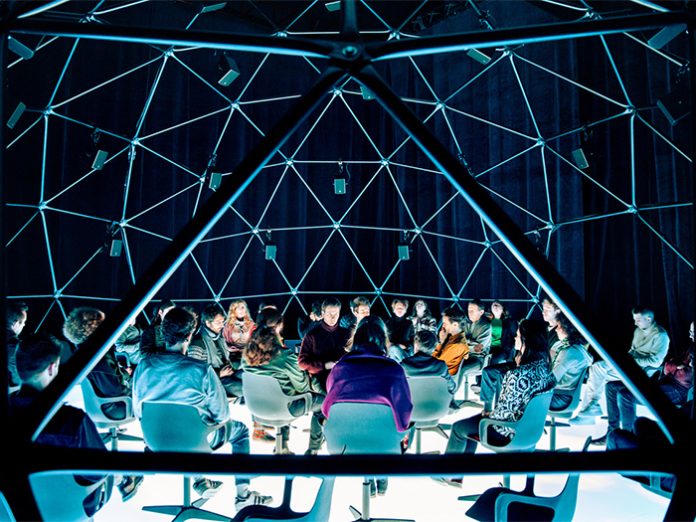
IRCAM Research Centre and its partners Amadeus, HOLOPHONIX, and VRTUOZ are paving the way to a new concept for the production and dissemination of live performances with sound enhancements: a Continuum between real and virtual stages, between artists and spectators, viewers, and listeners – and between French technological innovation and cultural productions with innovative formats.
The 1.2 million Euro research project is set to continue through Q4 2025.
“With more than 40 years of experience in research on sound spatialization for artistic creation, the realization of Continuum is made possible thanks to the support of the France 2030 program. The France 2030 program offers IRCAM the opportunity to set a new standard in terms of the quality and use of immersive sound rendering for live performances; and an opportunity to experiment with it in the context of large-scale artistic productions. The participation of the companies, Amadeus and VRTUOZ, contributes to their democratization for theatrical broadcasting and for individual experiences based on virtual reality devices,” stated Hugues Vinet, Director of Innovation and Research Means at IRCAM.
The Continuum research program aims to develop a comprehensive production chain, from capture to final playback, to create and transmit augmented spatial content to spectators in both a range of shared spaces (theaters, cinemas, public or private spaces) and in individual listening situations in virtual reality or binaural rendering with headphones.
“This project is an extension and reinforcement of our historical partnership with IRCAM,” adds Gaëtan Byk, CEO at Amadeus and Founder of HOLOPHONIX. “We have been working for a long time to design and make available technological tools, mainly intended for creative artists and participants in the performing arts, to compose space, to create immersive experiences, and to maximize the coherence between sound and visual images in performance venues, to improve the localization of musicians, actors, and singers on stage, and to create virtual acoustic spaces, among other concepts.
Many technological innovations are being designed, including among many others:
- A software solution for modeling room acoustic impulse response at high resolution, using Ambisonics microphones.
- A software solution to convert higher-order Ambisonics signals to binaural.
- A hybrid reverb engine, combining convolution reverb based on 3D Ambisonics impulse responses and synthetic reverb structure to create artificial late reverberation.
- An active (regenerative) acoustic enhancement system to expand the acoustical properties of performing arts venues.
- A graphical sequencer for digital art creation.
- A new range of loudspeakers adapted to spatial sound reinforcement based on linear arrays of speakers.
All of the software innovations will be available in the HOLOPHONIX environment.
The ‘Continuum’ technological advances will also be tested and presented to the public through a series of artistic productions.
This includes the recreation of a virtual acoustic space for the Royaumont Cistercian Abbey – which was destroyed during the French Revolution – in the open air, as part of a commissioned installation by Francesco Filidei, composer and organist.
Most of these artistic productions will be available by remote access using virtual reality through the VRTUOZ platform
“VRTUOZ has the ambition of making immersive content more attractive by focusing on quality and accessibility. The platform works by integrating technologies developed by excellent partners and focuses on curating content and designing a user path that is as simple and intuitive as possible. The Continuum project, in collaboration with IRCAM and Amadeus, will allow our future users, gathered remotely for an event, to share an unparalleled sound experience in terms of dynamism and spatialization,” concludes Gildas Dussauze, president at VRTUOZ.




